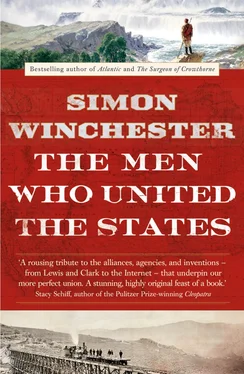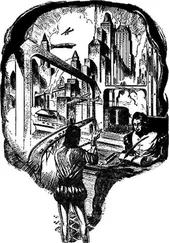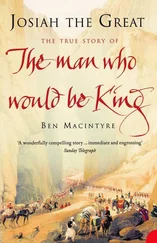An idea came to me one morning when I was writing a letter to a friend in China.
Beginning in the mid-1970s, I had lived for many years on the far side of the world and had spent much time tramping the territories between Vladivostok and Vietnam, between Manchuria and Malaysia, and between Kashmir and the Khyber Pass. All the countries of Asia—as well as the ancient civilizations of the Mediterranean—had held for centuries a philosophical view that everything and everyone can be reduced to the barest essentials, the five so-called classical elements . While the ancient Greeks revered just four elements, most other civilizations, from India eastward, nominated five.
The various eastern countries in their histories have made subtle variations in just what these five elements are, but those most commonly selected are wood, earth, water, fire, and metal. While I was writing the letter to my friend in Shanghai that day and explaining the idea behind the book, it suddenly seemed to me that the five elements could be a logical way of placing into context the basic themes behind the making and joining together of the United States.
The earliest explorers of the country, for example—Lewis and Clark and all the others in the years immediately following—were confronted by endless stands of ancient forest. Despite the myths, these forests were seldom as impenetrable as those in Russia or the tropics: Native Americans regularly set fires to manage and to thin them, to create pasture and to make usable landscape. But they were woods nonetheless, and they were vast and ancient.
The early explorers paddled through them and up and along the various rivers of their expeditions in wooden boats. In winter and at night, they kept themselves warm by building fires of oak and ash wood. They framed their earliest houses of timbers of cedar and pine.
Wood, in other words, could be claimed as an abiding elemental theme of their voyage of discovery, and it would go on to be a dominant feature of every subsequent early voyage across the country. Wood, then, could provide an overarching theme for a chapter that considered these first explorers and settlers, an emblem of the frontier in the forested wilderness that was the American continent.
Once the basic geography of this continent had been established, there came the equally vital task of learning what riches might lie beneath the woodlands and the carpets of vegetation. Geologists—men who were quite unschooled at first but highly sophisticated in later years—began to probe for the mineral riches and determine the agricultural worth of the land, the value and potential of the earth. The vision of mineral treasures lying locked within those millions of acres, or the possibilities of fertile farmland for crops or livestock, and of livelihoods to be made from raising them, would in due course lure out the settlers and prompt their treks westward into a country that was now established to be blessed with the promise. The earth and its riches, in short, would offer a second theme well worthy of exploring.
And the remaining three elements—water, fire, and metal—prove equally suited to this broader organizing principle.
Water, for instance. There is no gainsaying the use of the country’s rivers and streams as early highways and the later employment of these waterways for trade, for the making of power, for the creation of frontiers. Then, if the waterways were not wide enough or deep enough or straight enough, there came the making of artificial rivers—the canals—which might ease the passage of people and goods across mountain chains. For scores of decades, right through to today, there are stories to tell of figures who were prominent in such unifying endeavors, which could all be linked by the essential element of water.
After or overlapping with these stories, there came the invention of the engines and the concept of employing these engines as agents of motive power. The common physical feature of all such early engines was the employment of heat; whether they were powered by steam, gasoline, or aviation fuel, these engines would eventually allow the country to be journeyed across swiftly, expeditiously, and easily. The nation could now be intimately linked along roadways and highways traveled by a variety of contraptions, all powered by fire.
Finally: metal. The copper cable of the telegraph, the steel wire of the telephone, the iron mast of radio and television, the subterranean and aerial titanium and cadmium and platinum mysteries of the Internet—the elemental common denominators of the transmission of information might be varied indeed, but in the terms of the ancients, metal was the common factor. Metal was key.
Armed with this basic notion, I set off for several months of exploration. Like a mantra, the words wood , earth , water , fire , and metal became a phrase, repeated over and again, that lay always in the back of my mind as I traveled back and forth between the coasts and crossed the prairies and the mountain ranges of the United States.
I equipped myself for the journey with tent and compass and sleeping bag, as well as numberless maps, books of history, and novels by the classic writers of the American experience: Willa Cather, Wallace Stegner, John Williams, Theodore Dreiser, Sinclair Lewis, Sherwood Anderson. And as vade mecum, I also managed to collect all fifty volumes of the American Guide Series—the famous WPA Guides, still among the most thoughtfully composed and intelligently edited books about the individual states.
The books date back to the late 1930s and were each assembled, as part of President Roosevelt’s New Deal, in a federal government effort—the Federal Writers’ Project—to give work to unemployed authors, journalists, and photographers. Though as sources of precise travelers’ information, they are long past their sell-by date, their essays still have a sustaining importance, and they offer wise counsel and a grand perspective for anyone wishing to venture into the great American hinterland.
The WPA guides—government-made books, it has to be remembered—offer a reminder of a highly divisive argument about the making of America: the role of government in the creation and sustenance of human society.
That is not to say that in these pages I wish to offer an uncritical apologia for the concept of big government. Far from it. There are all too many examples of unforgivable excesses. The savage and divisive melancholy of the Trail of Tears was, after all, a consequence of overzealous government behavior toward America’s own native peoples, with results that ran entirely counter to the principal thesis of this book. The amassment of vast armories of atomic weapons, the involvement of the United States in scores of cruel and unnecessary foreign wars, the lunacies of Prohibition, of the Tuskegee experiment, of the infamous MK Ultra program, and of the fully legislated and half-century-long antipathy to Chinese immigration—all of these and more were the acts of a government that had simply become on occasion too big for its boots.
Yet there was much good done, too, and not a little of it was and still remains on display in the telling of this story. Without an engaged and functioning federal government, the development of these various strands of the country’s connective tissue would probably have been either delayed or never achieved at all. That is why my reading of the WPA Guides provided me with a symbolic madeleine, a means of remembering a single sobering fact: while today’s political hostility to big government is an understandable reality of contemporary life, the historic role of big government in the creation of the American nation is a reality, too, one that might as well be acknowledged and celebrated for its value and great worth.
Читать дальше












